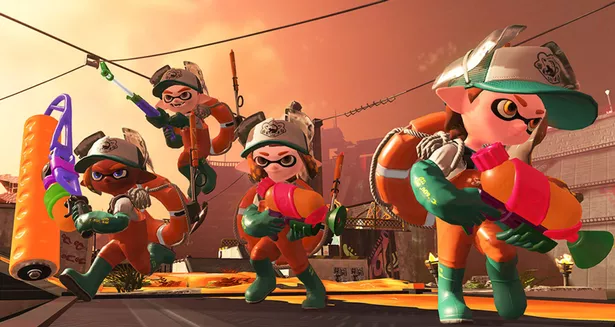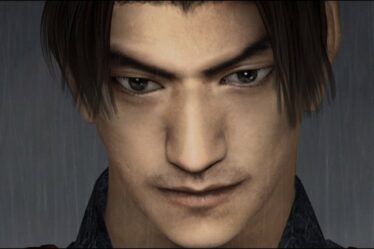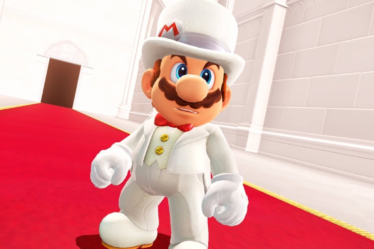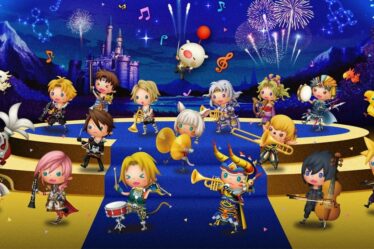
This article was originally published in Italian on GeekGamer.it in 2017.
Just a few weeks ago, we were praising Mario Kart 8 Deluxe, crowning it as the best karting game ever, both at home and in handheld mode, despite it being a “mere” enhanced version of the episode seen just a few years earlier. This was justified – at least partially – by the previous console’s limited reach, and now Nintendo (and the greedy third parties) seem intent on following the “enhanced porting” route in the months ahead, offering a mix of titles already seen (and widely consumed) on other platforms, often years after their original release.
Amidst this, Splatoon 2 emerges as a true sequel to one of the most beloved IPs from the Nintendo Wii U, but anyone who had “tentacles” on the gamepad will quickly feel right at home. So, is this a case of the “lazy development” I mentioned earlier? While other online shooters might be indistinguishable, dominated by dull shades of gray, Splatoon took an alternative path, offering a “non-violent shooter” concept where the main goal wasn’t to defeat opponents with headshots, but to paint the surrounding environment with your color, while avoiding the opponent’s ink. With stunning art direction and gameplay that’s both simple and engaging, Splatoon managed to satisfy everyone by integrating all the features of the ill-fated Nintendo console: a Miiverse-based messaging system that enriched the online hub, controls that utilized both the accelerometer and gyroscope, and a bird’s-eye view always visible on the gamepad to quickly show players their team’s advantage. A bestseller in Japan and the West, the arrival of the second episode on Nintendo Switch was only a matter of time.
After delving into the vibrant online component, I can now talk about Splatoon 2, the new addition to the Nintendo Switch family. As I mentioned before, anyone coming directly from the first game released just two years ago on Wii U will feel right at home, as the core concept remains the same, with identical gameplay structure featuring single-player content as well as competitive and cooperative online challenges, though limited to online play.
A superficial analysis might initially suggest this second iteration is a “1.5” version of the original title (hence the comparison to Mario Kart 8 Deluxe), but just playing through the impressive amount of content packed into the small game cartridge makes it clear that the development team worked hard to expand the original idea with a substantial amount of new material.
Splatoon 1.5? Nothing could be further from the truth: this second chapter is undoubtedly a worthy sequel and earns its complexity through a solid amount of single-player content – also acting as an in-depth tutorial for online challenges, complete with collectibles, weapon upgrades, and everything you’d expect from a single-player campaign. Once again, the brilliant level design from the previous chapter shines, with a wider variety of usable tools compared to before. As expected, each weapon type stands apart from the others, and whether you’re using paint buckets to “splatter” enemies, lethal airbrushes, or sniper rifles loaded with paintballs, there’s no shortage of strategic options and gameplay variety. An exclusive addition to Splatoon 2 is the Salmon Run.
In this mode, you play as employees of a mysterious company, tasked with stealing as many golden eggs as possible from increasingly fierce and lethal enemies, made up of generic foes and others so tough they can only be defeated using specific strategies. This “horde” mode is structured in three rounds, across different arenas, and played with varying weapons, all randomly selected, and it can be tackled either with random online players or friends if you’re in the mood for cooperative action. This addition alone is worth the price of admission, as it’s one of the most compelling aspects of the game. Curiously, though, the Salmon Run is available only during specific hours and on designated days set by Nintendo.
What is always available, however, are friendly matches, pro matches, and league battles, much like in the previous chapter: here you can compete online using a solid matchmaking system (with the occasional hiccup), taking on challenges that range from painting the environment more than your opponents to capturing specific areas with ink blasts, or escorting a moving payload across the arena depending on the team’s color dominance. After every ink-fight – whether you win or lose – you’re rewarded with experience points or, in pro challenges, a change in your player rank, either up or down. Climbing the ranks (and completing the single-player campaign) is crucial if you want access to all the weapons available at the vendors, while the wide range of clothes, accessories, and shoes to dress up your character offers variable slots. These get filled with a random bonus after each level-up, but you can also manipulate this “ability slot machine” by spending real digital currency in a series of mechanics aimed at hardcore fans and players seeking to perfect their competitive online play.
As I mentioned before, Splatoon 2 offers an expanded arsenal, with each “splat” tool having its pros and cons, which players will have to discover and adapt to their skill levels or playstyle. This aspect plays a central role in the sequel, setting it apart with a significant number of variations on the online battle theme, where main weapons, secondary tools, and super moves are constantly switched up and need to be balanced with important parameters related to the equipment, such as fire rate and range. The weapon selection continues to grow, as new content and special arenas have already been added since the game’s release about a month ago. Similar to the previous chapter, Nintendo will support the Splatoon 2 community with themed festivals where players will be divided into two teams and gather points battle after battle, but future updates will also bring new arenas, new weapons, and – as rumors suggest – the addition of a new playable character type: the fearsome Octarians, the enemies from the single-player mode.
As expected, the game’s sound and visual design are excellent, with an aesthetic once again rooted in a “maritime” theme, drawing from the trendiest neighborhoods of Shibuya in Tokyo, known for its youth fashion and J-pop influence. Whether you choose a male or female avatar, Splatoon 2 allows you to customize your character with a stylish haircut and options for skin and eye color. Technically, the game is designed to make the most of the new Nintendo hardware, while still keeping all the features from the Wii U version: the balloon-based messaging system from Miiverse – now internalized – motion controls (recommended by experts, though hard to get used to at first), and of course the HD rumble support that the Nintendo hybrid is known for. As with Mario Kart 8 Deluxe, the real “game-changer” in Splatoon 2 is the ability to take the game anywhere, use public wi-fi, and jump into frenetic battles with endless ink splatters, no tentacle hurt. In this regard, it’s interesting to note that resolution and frame rate have been dynamically adjusted to deliver the best quality during combat, always locked at 60 frames per second. So rest assured: the gameplay runs as smooth as butter, even in the most hectic situations. Overall, Splatoon 2 is undoubtedly one of the most colorful and visually satisfying titles available for Nintendo Switch. No ugly compromises, just tons of fun.
However, a downside is the inclusion of a companion app for smartphones, dedicated to game statistics and voice chat. It’s practically useless in the background, and beyond some convenient features like the ability to “reserve” trendy items, it’s not highly recommended. Personally, I’ve never felt the need to speak with my teammates (especially when the game already has a rudimentary chat system and there are better alternatives like Discord or Teamspeak), but it’s amusing to see how Nintendo is still experimenting with its online platform while direct competitors are lightyears ahead in this area.
Splatoon 2 shakes off the “enhanced porting” label it was stuck with after Nintendo first revealed it, offering a gaming experience that, while not completely different from the original, introduces a number of exciting new features and variations. With excellent art direction and top-notch level design, this new Nintendo Switch first-party title is a must-buy for any player looking for a fun, summer-like experience – but one that’s equally enjoyable under the covers on Christmas Day.


